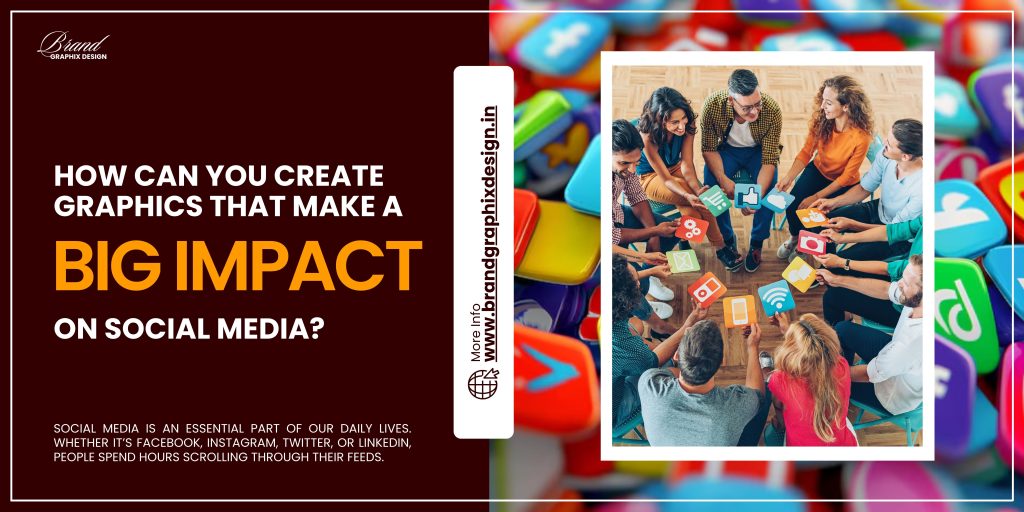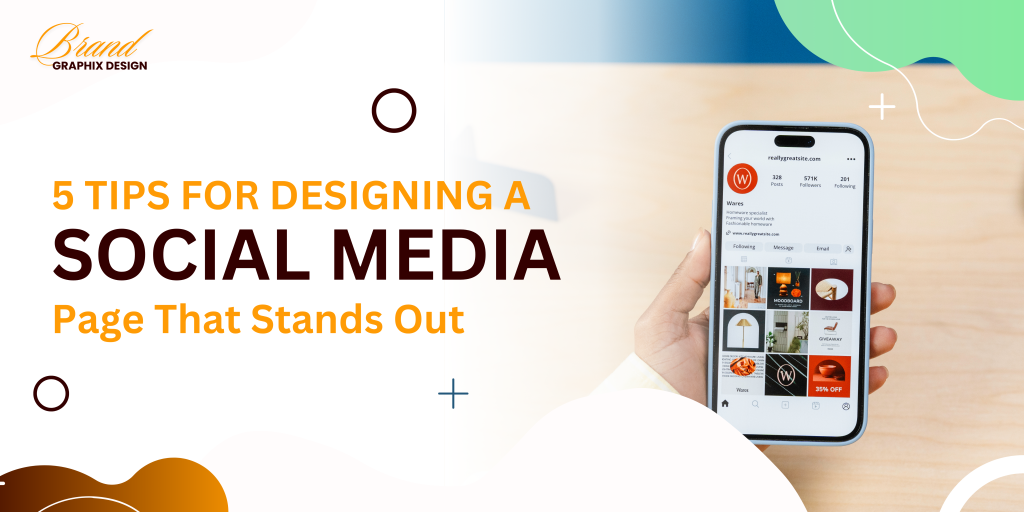Why Social Media Graphics Matter
Social media is an essential part of our daily lives. Whether it’s Facebook, Instagram, Twitter, or LinkedIn, people spend hours scrolling through their feeds. For businesses, this presents a huge opportunity. But with so much content being posted every second, how do you make sure your brand stands out? The answer lies in impactful graphics. Great graphics not only catch the eye but also communicate your message clearly and quickly. In this blog, we will explore how you can create graphics that make a big impact on social media.
1. Know Your Audience
Understanding your audience is the first step to creating graphics that resonate. Who are they? What do they like? What kind of content do they engage with? Knowing your audience helps you design graphics that they find attractive and engaging. For example, if your audience is young and trendy, you might use bright colors and bold designs. If they are more professional, a cleaner, more refined design might work better.
- Research your audience’s demographics.
- Analyze the content they interact with most.
- Tailor your designs to match their preferences.
2. Keep It Simple
Simplicity is powerful. On social media, people scroll quickly, so your graphic needs to make an impression in just a few seconds. A simple design with a clear message is more effective than a cluttered one. Focus on one main idea per graphic. Use minimal text and let the visuals do the talking. Remember, less is more.
- Use short, clear text.
- Avoid overcrowding your design with too many elements.
- Focus on one key message per graphic.
3. Choose the Right Colors
Colors play a crucial role in how your graphic is perceived. Different colors evoke different emotions. For instance, red is associated with urgency and excitement, while blue conveys trust and calm. Choosing the right colors can help you communicate your message more effectively. It’s also important to use colors that align with your brand. Consistent use of brand colors across all your graphics helps strengthen your brand identity.
- Use colors that align with your brand identity.
- Choose colors that evoke the desired emotions.
- Ensure there is enough contrast between text and background.
4. Use High-Quality Images
The quality of the images you use can make or break your graphic. Blurry or pixelated images can make your brand look unprofessional. Always use high-resolution images that are clear and sharp. If you’re using stock images, choose ones that look natural and relatable, rather than overly staged or generic. High-quality images not only look better but also create a more positive impression of your brand.
- Choose high-resolution images for clarity.
- Avoid overly generic stock images.
- Use images that are relevant to your message.
5. Incorporate Your Brand’s Visual Elements
Your brand’s visual elements, such as your logo, colors, and fonts, should be present in every graphic you create. This consistency helps build brand recognition. When people see your graphics, they should instantly associate them with your brand. However, make sure these elements don’t overpower the design. Your logo, for example, should be visible but not so large that it distracts from the main message.
- Include your logo in a subtle yet visible manner.
- Use your brand’s colors consistently.
- Choose fonts that match your brand’s tone.
6. Focus on Typography
Typography is more than just choosing a font. It’s about making sure your text is readable, visually appealing, and aligned with your brand’s identity. Use fonts that are easy to read on all devices, including mobile. Don’t use too many different fonts in one graphic as this can make the design look messy. Instead, stick to one or two fonts that complement each other.
- Choose readable fonts that are clear on all devices.
- Limit the number of fonts to one or two per graphic.
- Ensure the font size is appropriate for the platform and audience.
7. Create Visual Hierarchy
Visual hierarchy is about guiding the viewer’s eye to the most important parts of your graphic first. You can achieve this by using different sizes, colors, and placements for your text and images. For example, make the headline larger than the body text, or use a bold color to highlight important points. A strong visual hierarchy ensures that your audience sees the most important information first, even if they only glance at your graphic.
- Make headlines larger and bolder than body text.
- Use contrasting colors to highlight key points.
- Position important elements in the top or center of the graphic.
8. Use Call to Actions (CTAs)
Every social media graphic should have a purpose. What do you want your audience to do after seeing it? Whether it’s visiting your website, signing up for a newsletter, or making a purchase, include a clear and compelling call to action (CTA). Your CTA should be easy to understand and should stand out from the rest of the text. Use action-oriented words like “Shop Now,” “Learn More,” or “Sign Up Today” to encourage your audience to take the desired action.
- Make your CTA clear and direct.
- Use action-oriented language.
- Ensure the CTA stands out visually.
9. Optimize for Each Social Media Platform
Different social media platforms have different requirements for images and graphics. For example, Instagram is all about square images, while Pinterest favors vertical images. Facebook, on the other hand, works well with horizontal images. To maximize the impact of your graphics, make sure they are optimized for the platform you’re posting on. This includes not only the size and format of the image but also the content. What works on Instagram might not work on LinkedIn, so tailor your graphics accordingly.
- Check the recommended image sizes for each platform.
- Tailor your design to suit the platform’s audience and style.
- Test how your graphics look on different devices before posting.
10. Test and Improve
Creating impactful graphics is an ongoing process. What works today might not work tomorrow as trends and audience preferences change. It’s important to continuously test your graphics to see what resonates with your audience. Use analytics tools to track the performance of your social media posts. Pay attention to metrics like engagement rates, shares, and comments. Based on the data, tweak your designs and try new approaches. The more you test and refine your graphics, the more effective they will become.
- Use social media analytics to track graphic performance.
- Experiment with different designs to see what works best.
- Continuously refine your approach based on feedback and data.
Elevate Your Social Media Presence with Impactful Graphics
Creating graphics that make a big impact on social media is essential for standing out and connecting with your audience. Whether you need help with designing eye-catching visuals or want to enhance your brand’s online presence, we’re here to help.
Contact us today at +91 91189 11171 to discuss your social media graphic needs and take your brand to the next level.



